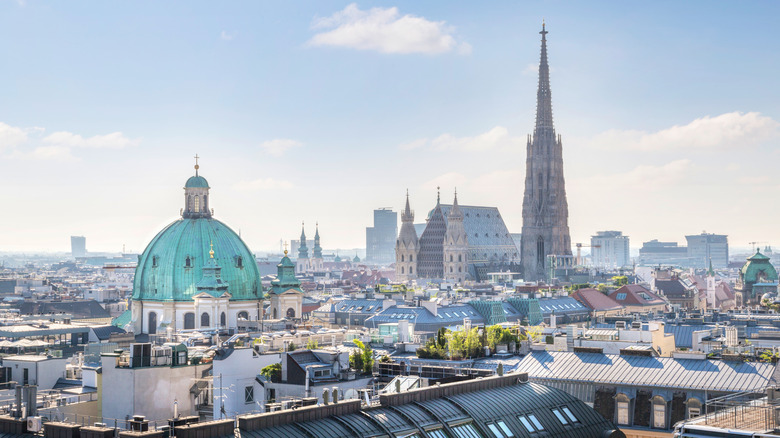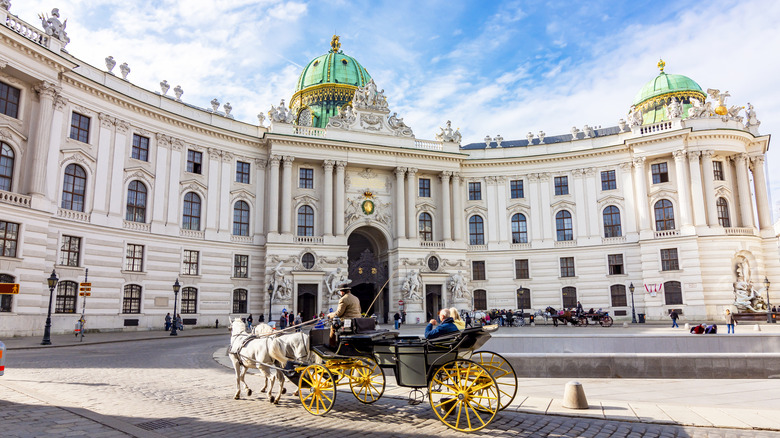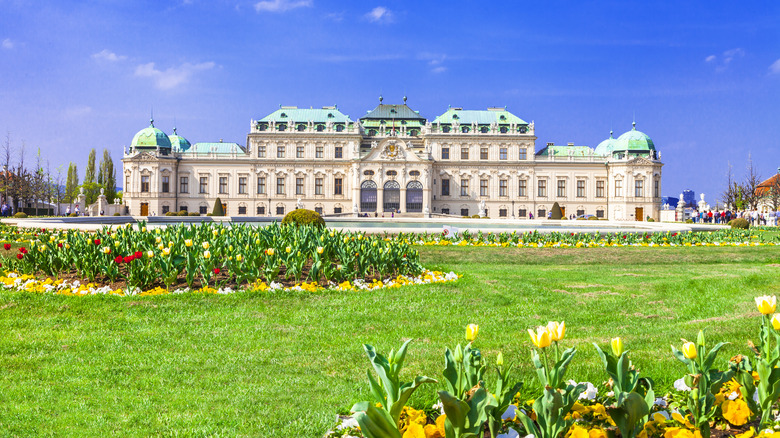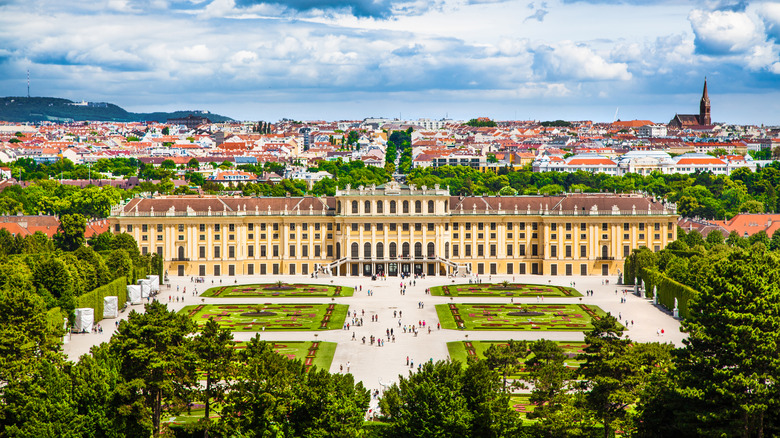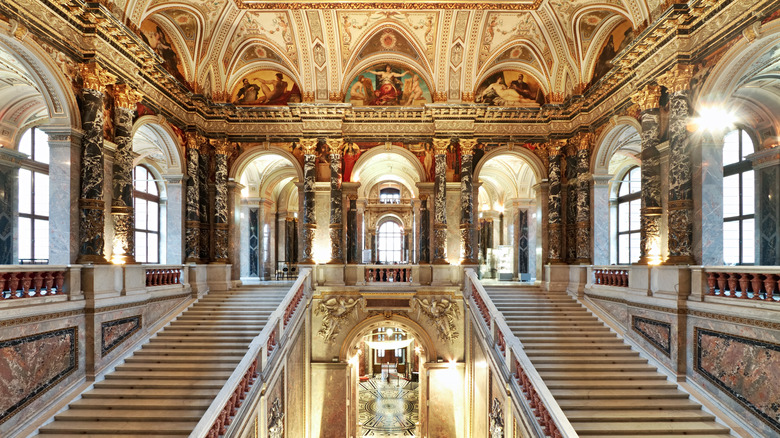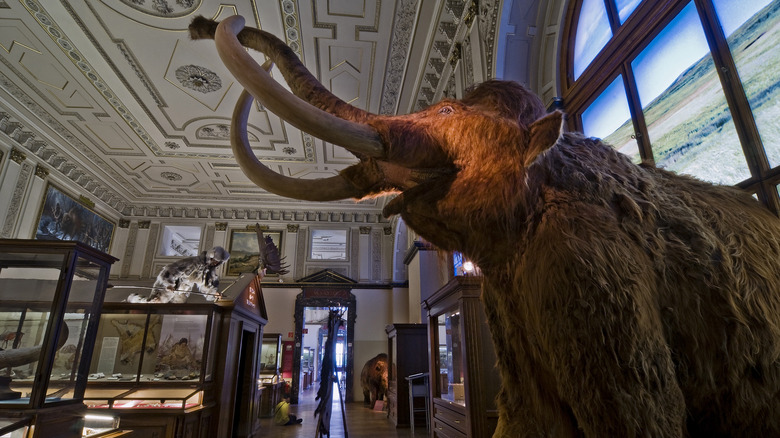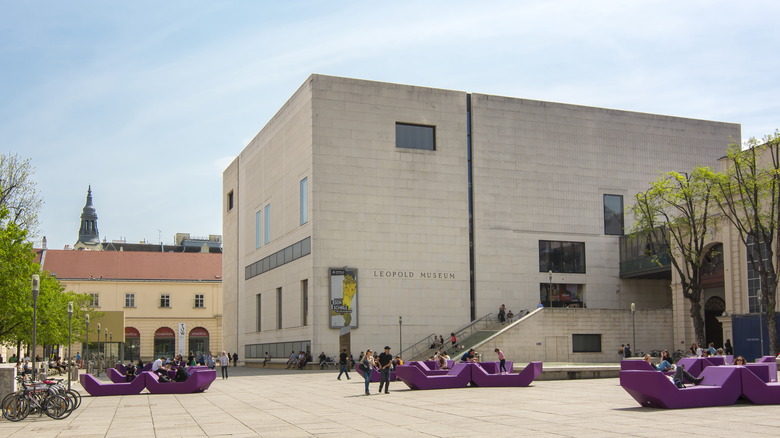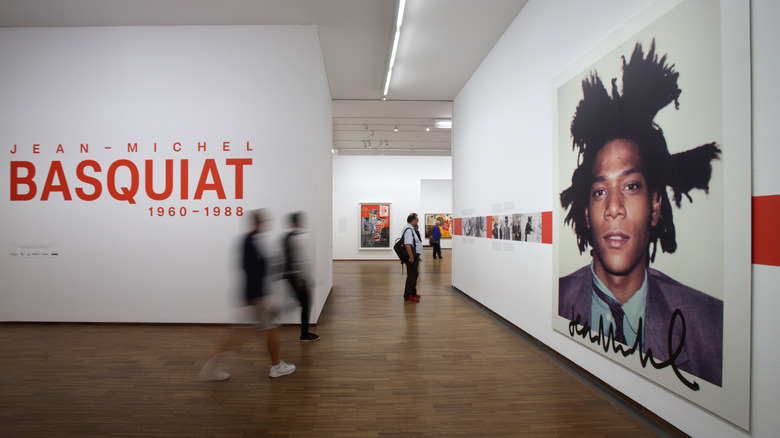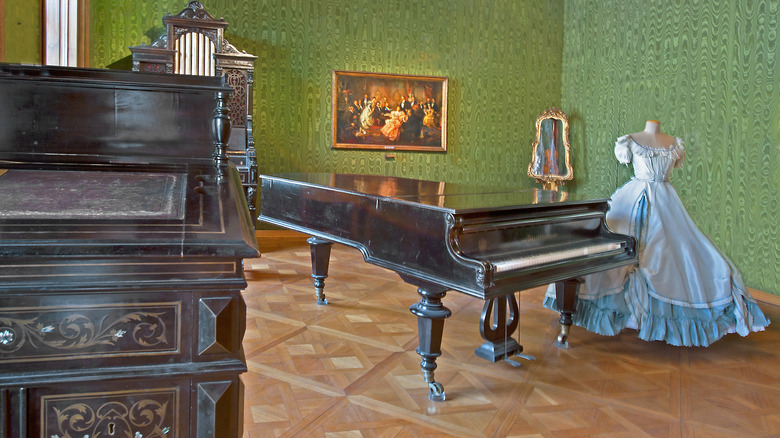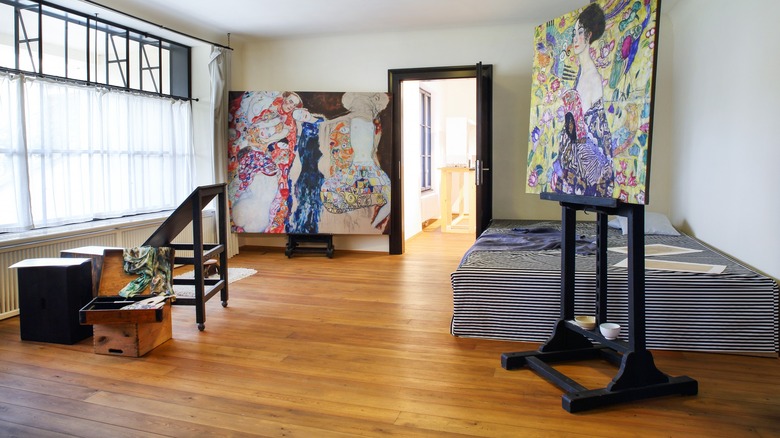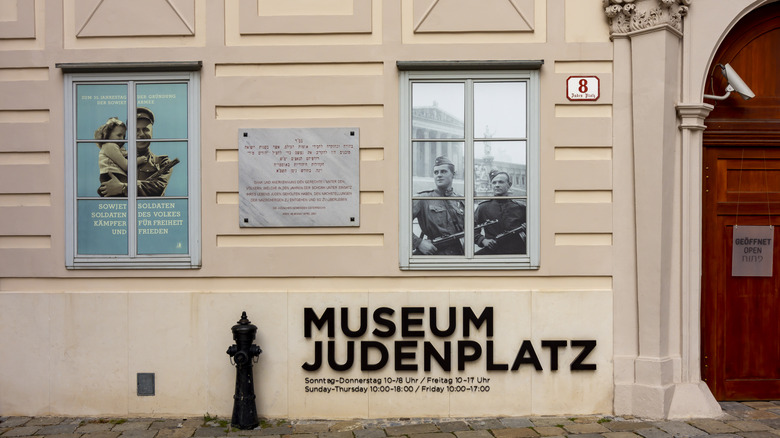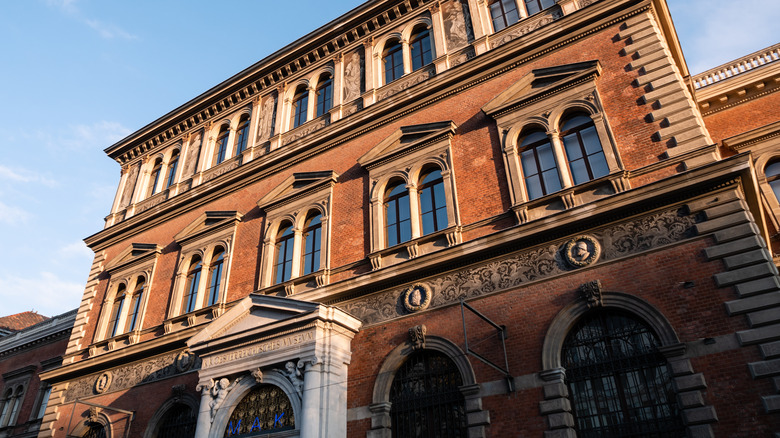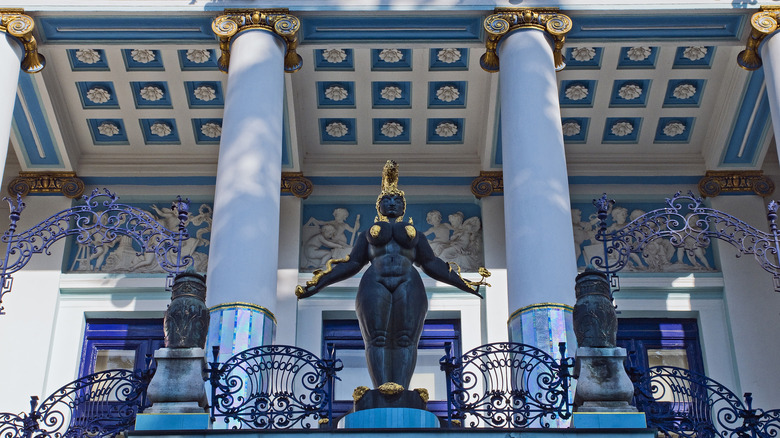The Best Museums To Visit In Vienna
Europe is a dream destination for many. After all, it's home to some of the most historic, charming, and friendly cities in the world. From Amsterdam's canals and endless museums to Florence's incredible food and London's endless family-friendly attractions, there's something for every type of traveler. The list of popular holiday destinations in Europe is extensive, but there is one place that's often overlooked. In fact, it may just be Europe's most underrated metropolis: Vienna.
It's time to change that! The Austrian capital is home to royal palaces, top-rated art museums, family-friendly attractions (like the world's oldest zoo), a rich cafe culture with mouth-watering cakes at every turn, and more. Many of its star attractions are located within walking distance of each other and a large portion are clustered in the MuseumsQuartier. Exploring the historic city center on foot is not only easy but a must. Meanwhile, attractions that are further afield are well connected by an extensive metro and tram network. To help inspire your next trip and make planning your itinerary a little easier, here are the very best must-visit museums in Vienna.
The Hofburg
The Hofburg was once the imperial palace of the Habsburg dynasty and served as the royals' winter residence as of the 13th century. It's one of the largest palace complexes in the world and today, it's home to numerous museums. Interestingly, it's also the official residence of the President of Austria. As a tourist, you can visit the Imperial Apartments to see where and how the Habsburgs lived for over six centuries and walk through lavishly decorated bedrooms, salons, and even Empress Elisabeth's exercise room. The empress, who was nicknamed Sisi, also gets her time in the spotlight in the second major museum here: the Sisi Museum. Comprising over 300 personal objects – including a milk glass complete with a traveling case! – it paints a full picture of the life (and personality) of Emperor Franz Joseph I's wife. A single-day ticket will get you into both attractions.
Hofburg is also home to the Imperial Treasury where you can see crowns and other royal treasures; the Spanish Riding School where you can see Lipizzaner horses in action at a training or dressage performance; and the Austrian National Library, whose 18th-century State Hall is one of the most beautiful in the world. These require separate tickets.
The Belvedere
Set in a sprawling park, the Belvedere museum complex is made up of two historic palaces (Upper Belvedere and Lower Belvedere), a modern-day addition dedicated to contemporary art (Belvedere 21), and lush Baroque-style gardens. You could easily spend an entire day here, but if you're tight on time and still want to visit all three museums (Tip: Opt for the 3-in-1 day ticket), you'll need to allocate about three hours.
Built by Prince Eugene of Savoy in the early 1700s, Upper and Lower Belvedere were meant to serve as his summer home. Now, the lavish estate houses some of the world's greatest art. Start at Upper Belvedere to see works from the Middle Ages running through Baroque, Modernism, and all the way up to the 1970s. Here, you'll have the chance to view pieces from greats like Egon Schiele, Claude Monet, and Vincent van Gogh. However, it's the Gustav Klimt collection – the largest in the world – that sets art lovers' hearts aflutter, including the iconic "The Kiss."
As for Lower Belvedere, it's home to temporary exhibits, like 2023's "Klimt. Inspired by Van Gogh, Rodin, Matisse," and offers a chance to glimpse how Prince Eugene lived through preserved period rooms, including the Marble Gallery, Gold Cabinet, and Hall of Grotesques. Finish off your visit at Belvedere 21, which was specially built to showcase contemporary art, film, and music.
Schönbrunn Palace and Schönbrunn Zoo
Located just outside the historic city center, Schönbrunn Palace is perhaps the most popular attraction in the city. The sprawling complex became the Habsburgs' summer home under the 18th-century rule of Maria Theresa. Today, the imperial palace, along with its lush gardens and award-winning Schönbrunn Zoo, is on UNESCO's list of World Heritage Sites. While you could easily spend half a day exploring the palace, walking through the various green spaces, and getting lost in the park maze and labyrinth, you can tailor your visit to your time frame. Ticket reservations for the palace are a must and you can opt to visit the State Apartments (about 25 minutes), take the Imperial Tour (about 40 minutes) to see Emperor Franz Joseph I and Sisi's private apartments, or the Grand Tour (about 60 minutes) which covers all of the above, as well as Maria Theresa's rooms.
Schönbrunn Zoo, where you can spend the rest of your day, is equally impressive. In addition to being the oldest zoo in the world, it's repeatedly been voted Europe's best zoo and is home to 700 species, from Siberian tigers to capybaras, bearded dragons, exotic birds, and the show-stealing giant pandas. Tip: Make sure to check the daily animal feeding schedule for an added treat.
Depending on what you'd like to visit, there are various combination tickets available. For a family day out, be sure to also stop by the Children's Museum Schönbrunn Palace where kids can learn about royal life through hands-on exhibits.
Kunsthistorisches Museum Vienna
The Kunsthistorisches Museum Vienna looks like a palace and the collection it houses is truly royal in nature. Opened in 1891, the museum was commissioned by Emperor Franz Joseph I as a place to display the Imperial Collections of the Habsburgs. Step into the opulent entrance hall and you'll be greeted by a dizzying array of sculptures, marble columns, and gold. Walk up the grand staircase and admire the paintings created by brothers Ernst and Gustav Klimt and Franz von Matsch, which decorate all of the empty spaces between arches and columns.
This breathtaking beginning sets the tone for the impressive (and varied!) art collection you'll experience inside. Spanning Ancient Egypt to the late 18th century, artifacts range from Egyptian sarcophagi to Greek and Roman antiquities, some 600,000 coins, as well as paintings by an impressive array of Old Masters. Here, you'll be able to admire works by the likes of Peter Paul Rubens, Rembrandt van Rijn, and Johannes Vermeer, as well as experience the world's largest collection of works by Pieter Bruegel the Elder. In need of a break? You can stop by the café-restaurant for a traditional coffee and torte served in the gorgeous Cupola Hall or settle in for a full breakfast, lunch, or dinner.
Natural History Museum Vienna
The Natural History Museum Vienna has a history as impressive as its displays. Franz I Stephan of Lorraine was a Habsburg monarch, Emperor of the Holy Roman Empire as of 1745, and an avid lover of the natural world. It was he who founded the Schönbrunn Zoo in 1752, followed by Schönbrunn Palace's botanic garden the following year. His passion was so strong that he even funded scientific expeditions abroad and, in 1750, purchased what was then the world's biggest collection of natural history objects. Among the 30,000 pieces he acquired were fossils, minerals, corals, and much more. Following his death in 1765, the collection was made public, laying the foundation for today's museum.
Located right next to the Kunsthistorisches Museum Vienna, it brings together biology, earth sciences, anthropology, and archaeology. The rich permanent collection features everything from fossils to meteorites, minerals, animal specimens, and (always a hit) dinosaurs. Just some highlights include a full-sized pteranodon model, pterosaur skeletons, and an animatronic version of an allosaurus placed next to the real deal.
Leopold Museum
The Leopold Museum is conveniently located next to the Natural History Museum Vienna and Kunsthistorisches Museum Vienna and is home to an impressive array of Austrian modern art collected by Dr. Rudolf Leopold and his wife, Elisabeth Leopold. Dr. Leopold began acquiring works in the 1950s and eventually ended up with over 5,000 pieces from local masters like Egon Schiele, Gustav Klimt, and Oskar Kokoschka. As his obituary in The New York Times pointed out, Dr. Leopold was particularly fond of Schiele, even though his works were taboo and quite controversial at the time. In addition to writing books about the artist, he amassed the largest Egon Schiele collection in the world, comprising 42 paintings, 187 original graphics, and various manuscripts.
In 2001, the Leopold Museum opened to allow everyone to enjoy the fruits of Leopold's art collecting. The space is truly a love letter to the art of Vienna, particularly Viennese Modernism. In addition to the Schiele collection, the permanent exhibition, "Vienna 1900. Birth of Modernism," brings together 1,300 paintings, sculptures, photographs, textiles, furniture, and more to present a well-rounded picture of the art of the times.
Albertina and Albertina Modern
Although these two museums are housed in separate buildings, it's just a nine-minute walk between them and buying a combined entry ticket will save you over 25% on admission. Begin at Albertina and get lost in the stellar permanent exhibition "Monet to Picasso: The Batliner Collection," which features works by greats like Marc Chagall, Edgar Degas, Paul Gauguin, and Paul Cézanne. The museum also hosts top-rated temporary exhibits, like 2023's "Dürer, Munch, Miró: The Great Masters of Printmaking." But it's not just fine art you'll see here. The building that houses Albertina was once the residence of the Habsburg Archdukes and today, there are 20 restored and furnished Habsburg State Rooms for you to visit.
Once you've finished your journey to the past, you can venture over to Albertina Modern for a big dose of contemporary art. While the permanent collection focuses on post-1945 Austrian artists, temporary exhibits take a more international approach with shows like 2022's "Ai Weiwei: In Search of Humanity" and 2023's "Andy Warhol to Damien Hirst: The Revolution in Printmaking."
Tip: It makes sense to do both museums on the same day, given their proximity, but your ticket allows you to visit them on different days within one year.
Former apartments of Beethoven, Strauss, and more
Think of a famous composer and chances are, they lived and worked in Vienna – at least for a time. Indeed, Ludwig van Beethoven, Johann Strauss, Franz Schubert, and Joseph Haydn all called the city home and six of their former apartments have been turned into museums. You can purchase a combined ticket to save nearly 40% on admission and gain access to: Haydnhaus where Haydn spent the last 12 years of his life; Johann Strauss Wohnung where Strauss lived and worked for seven years; Schubert Geburtshaus where the composer was born; Schubert Sterbewohnung, the apartment where he spent the last few weeks of his life before his death at just 31; Beethoven Pasqualatihaus where Beethoven worked on many of his famed symphonies over eight years; and the Beethoven Museum which showcases the famed maestro's life, work, and struggles. While the museums are compact, they are spread out across the city, so you may want to visit them on separate days. Luckily, your ticket is valid for a full year.
Note: You may also wish to visit Mozarthaus Vienna, the only remaining Viennese apartment that Wolfgang Amadeus Mozart once called home, but that will require a separate ticket.
Klimt Villa
Located close to Schönbrunn Palace, Klimt Villa is a must-visit for Gustav Klimt fans. While it may not generate as much buzz as, say, Upper Belvedere's collection of Klimt paintings, it is the only space in the city where you can literally walk in the artist's footsteps and learn more about him as a person.
What is now an impressive villa used to be a single-story summer house which Klimt rented and used as a workshop from 1911 until his death in 1918. Notably, while the home was later expanded (and nearly demolished!), the studio space was left untouched. Today, it has been meticulously reconstructed to look as it did when Klimt was in residence. With help from photographs and historical accounts, curators were able to bring Klimt's reception room and studio back to life, offering visitors the unique chance to experience the space as the artist himself would have seen it. Once you're done inside, you can wander out into the very garden he once painted and imagine yourself the subject of one of his works. Tip: If you happen to be visiting on a weekend between May and October, you can enjoy a coffee break in the Garden Café.
Jewish Museum Vienna
The first Jewish museum in the world was founded in Vienna in 1895 and today's Jewish Museum Vienna continues that storied legacy. During WWII, Nazis closed the museum and confiscated its collection, over half of which was never to be seen again. The surviving objects now make up the core of today's museum, which aims to shine a light on Jewish history, religion, and culture. It is split into two locations – Museum Judenplatz and Museum Dorotheergasse – but they can easily be visited at the same time, as they're just an eight-minute walk apart. However, your ticket is valid for seven days, so you can also split them up if you prefer.
We recommend starting at Museum Dorotheergasse where the permanent exhibit "Our City! Jewish Vienna – Then to Now" will teach you about Jewish life from the Middle Ages until the present day. Other highlights include the Atelier, which showcases the art of celebrating various holidays and festivities, as well as Visible Storage, which houses the remaining collection from the original museum. Then, you can make your way to Museum Judenplatz, housed on the site where a 13th-century synagogue once stood until its destruction in 1421. This was the heart of the Jewish quarter at the time and the synagogue's remains can be seen inside the museum alongside a virtual reconstruction.
Museum of Applied Arts (MAK)
The Museum of Applied Arts (MAK) dates all the way back to 1863 when Rudolf von Eitelberger, the first-ever professor of history at the University of Vienna, dreamt up the space to rival London's Victoria and Albert Museum. Initially called the Imperial Royal Museum of Art and Industry, the MAK showcases a wide-ranging collection, from furniture to textiles, contemporary art, and Venetian glass. Its permanent exhibition, titled "Vienna 1900," is a must-see made up of 500 pieces that shine a spotlight on the various art forms of the time. Fans of Gustav Klimt will be delighted to find that the exhibit is home to a shimmering design drawing that runs over three feet in length and is covered in gold leaf, silver leaf, and platinum leaf. The panel depicts the design from the Stoclet Frieze, which Klimt designed for the Palais Stoclet in Brussels (a private home) around 1900.
Other highlights include the MAK Permanent Collection Asia, as well as temporary exhibits from the likes of French performance artist Lili Reynaud-Dewar and New York Minimalist Rosemarie Castoro.
Ernst Fuchs Museum (Otto Wagner Villa)
Yes, the Ernst Fuchs Museum (Otto Wagner Villa) is off the beaten path, but it rewards those who make the effort to reach it with a truly surprising gem of a visit. Accessible by public transport from the Maria-Theresien-Platz, this unique museum brings together two great artists – Otto Wagner and Ernst Fuchs – and offers a rare respite from the crowds.
Famed Austrian architect Otto Wagner (born in 1841) left his stamp all around the city and you can still admire his Art Nouveau creations while wandering Vienna's historic center, from his Majolikahaus (Majolica House) to the Karlsplatz metro station. However, this villa offers the unique opportunity to visit an entire home dreamt up by Wagner. Built in 1888 as a summer getaway for his family, the villa later changed hands and fell into disrepair until Viennese painter Ernst Fuchs (born in 1930) purchased it in 1972. With help from Wagner's original designs, he lovingly restored the home and went on to use it as his own studio. These days, a visit offers the chance to admire the works of both men.
Walk through the opulent rooms filled with period furniture (including Art Nouveau decor designed by Wagner himself), take in the Fuchs paintings adorning the walls, and get ready to have your breath taken away by beautiful touches, like the stunning stained glass windows by Adolf Böhm.
